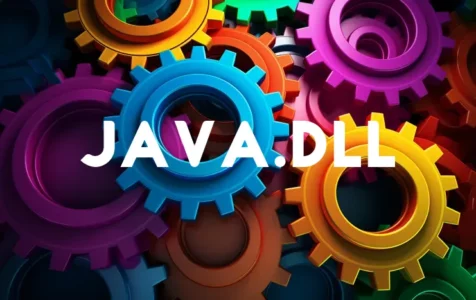Introduction to Java.dll
The java.dll is a Dynamic Link Library file associated with the Javaв„ў Platform Standard Edition (SE) software, developed by Oracle Corporation. It is an essential component required for running applications developed with Java on Windows PCs.
Is Java.dll Safe?
In its legitimate form, java.dll is safe to run as it is part of the Java SE runtime environment that numerous applications depend on. However, like any file on your system, it can potentially be a target for malware or virus infection, which might try to disguise itself as java.dll. Therefore, users must ensure the file is located in the correct directory and is a part of legitimate Java software installation.
Common Issues Associated with Java.dll
Issues with java.dll can arise from various scenarios. For instance, the file may be deleted, misplaced, or corrupted because of:
– Faulty application installation or uninstalls.
– Malicious software on the system.
– A damaged Windows registry.
– Multiple versions of Java installed that conflict with one another.
Expert Tip: For smoother PC performance, consider using a PC optimization tool. It handles junk files, incorrect settings, and harmful apps. Make sure it's right for your system, and always check the EULA and Privacy Policy.
Special offer. About Outbyte, uninstall instructions, EULA, Privacy Policy.
Troubleshooting Java.dll Issues
Here’s a step-by-step approach to resolving common issues encountered due to java.dll:
1. Check if Multiple Versions of Java are Installed:
– Open the Control Panel and navigate to “Uninstall a program”.
– Check if multiple versions of Java are listed. Uninstall all but the most recent one.
2. Set or Correct Environment Variables:
– Open “System Properties” by right-clicking “This PC” and selecting “Properties”. Click “Advanced system settings”.
– Under the “Advanced” tab, click the “Environment Variables” button.
– Ensure JAVA_HOME is set to point to the location of your JDK installation, for example: C:\Program Files\Java\jdk1.8.0_291.
– Update the PATH variable by adding “%JAVA_HOME%\bin” at the beginning to ensure Java commands are found correctly when executed.
3. Check for Incorrect Registry Keys:
– Run “regedit” and navigate to “HKEY_LOCAL_MACHINE\SOFTWARE\JavaSoft”.
– Confirm that the registry keys related to Java are pointing to the correct JRE installation paths.
4. Verify the Java Installation:
– Run “java -version” in the command prompt to check the installed version of Java.
– If there’s an error, reinstall Java from the official Oracle website.
5. Download java.dll from a Trusted Source:
– If java.dll is missing, download it from a reliable source, such as the official Oracle website.
Preventing Java.dll Errors
To prevent java.dll errors, keep these points in mind:
– Always download Java from the official Oracle website.
– Use security software to scan for malware that can disguise itself as java.dll.
– Keep your system and Java installation updated.
– Avoid manual registry edits unless you are confident in doing so, as mistakes can lead to system instability.
User Community Experiences
Users on Stack Overflow have shared experiences indicating that incorrect system paths and multiple Java installations often lead to issues with java.dll. Solutions from the community involve cleaning the PATH environment variable, setting the JAVA_HOME correctly, and maintaining a single Java installation.
Conclusion
Java.dll is a key component of the Java SE runtime environment and issues with it can cause applications to malfunction or not run at all. Most problems with java.dll can be resolved by ensuring correct system settings and maintaining a single, up-to-date Java installation. Always remain vigilant against malware and perform regular system maintenance to prevent future issues.
